 |
 |
Invited / Keynote Speakers |
|
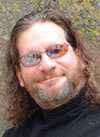 |
Lawrence Hunter, Ph.D.
Director
Center for Computational Pharmacology
University of Colorado School of Medicine
Lawrence Hunter - Biography (.pdf)
Title: Automated Aides for Generating Scientific Insights
Abtsract: The profusion of high-throughput instruments and the explosion of new results in the scientific literature, particularly in molecular biomedicine, is both a blessing and a curse to the bench researcher. Even knowledgable and experienced scientists can benefit from computational tools that help navigate this vast and rapidly evolving terrain. However, effective design and implementation of computational tools that genuinely facilitate the generation of novel and significant scientific insights remains poorly understood. In this talk, I will describe a set of efforts that combines natural language processing for information extraction and graphical network models for semantic data integration into a system that has recently played a pivotal role in making a significant discovery, and also discuss how it might be possible to compare and evaluate such systems. |
 |
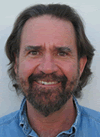 |
Richard H. Lathrop, Ph.D.
Professor
Computer Science Department
University of California, Irvine
Richard H. Lathrop - Biography (.pdf)
Title: Synthetic Biology from the Ground Up
Abtsract: Classical philosophical discourse divides the intellectual world into analysis and synthesis. Analysis, or the concern with that which is, has been a major occupation of computational biology ever since its inception, and has led to stunning breakthroughs in the life sciences ranging from mapping the origins of life to decoding the human genome.
Synthesis, or the concern with that which might be, has always played an important role in biology and medicine by guiding our ability to manipulate living systems. Synthetic biology has roots that extend thousands of years into the past, as the selective breeding practiced since ancient times. Genetic engineering cut-and-paste in the last quarter of the previous century marked a dramatic improvement in our ability for direct manipulation of the living systems encoded by DNA.
Recent advances in modern science and technology have greatly expanded our capabilities for synthesis in biology: improved synthetic methods have improved our ability to build, while improved computational tools have improved our ability to know what to build. Drawing on the speaker's experiences as a co-founder of CODA Genomics, Inc., a translation engineering and synthetic biology company, this talk will survey a number of facets of synthetic biology that are of interest to the bioinformatician and computational biologist. Topics will range over understanding the basics of the underlying technology, the unexpected practical difficulties one encounters, making mutants and mutations, implementing systems biology in wet-ware, attempts to create life, biotech and pharmaceutical applications, counter-terrorism, and of course, the role of computation in all of the above. |
 |
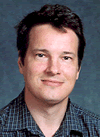 |
Andrey Ptitsyn, Ph.D.
Assistant Professor
Colorado State University
Andrey Ptitsyn - CV (.pdf)
Title: A Computational Discovery of Hope: Novel Mechanisms of Insulin Resistance
Additional Author: Steven Smith
Abstract: Classification of large volumes of data produced in a microarray experiment allows for the extraction of important clues as to the nature of a disease.Using multi-dimensional unsupervised FOREL algorithm we have reanalyzedthree public datasets of skeletal muscle gene expression in connection with insulinresistance and type 2 diabetes. Our analysis revealed the major line of variation betweenexpression profiles of normal, insulin resistant, and diabetic skeletal muscle. A cluster of most"metabolically sound" samples occupied one end of this line. The distance along this line coincidedwith the classic markers of diabetes risk, namely obesity and insulin resistance, but did not followthe accepted clinical diagnosis of DM2 as defined by the presence or absence of hyperglycemia.Genes implicated in this expression pattern are those controlling skeletal muscle fiber type andglycolytic metabolism. Additionally myoglobin and hemoglobin were upregulated and ribosomalgenes dysregulated in insulin resistant patients.Our findings are concordant with the changes seen in skeletal muscle with altitudehypoxia. This suggests that hypoxia and shift to glycolytic metabolism may also drive insulin resistance. |
 |
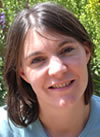 |
Karin Maria Verspoor, Ph.D.
Los Alamos National Laboratory
Karin Maria Verspoor - CV (.pdf)
Title: Integrating Semantic Data Sources for Disease-implicated Gene Discovery
Additional Authors: Damian Gessler, Cliff Joslyn, Bjoern Koester, Stefan Schmidt
Abstract: Recent analysis of breast and colorectal cancer tumors through joint genomic and informatic filtering of 816,986 putative nucleotide changes across 13,023 genes yielded a surprising 198 allelic variants directly implicated in the cancers (Sjoblom et al, 2006). This greatly expanded previous estimates on the scope and complexity of the cancer genome, even though the candidate list was generated primarily by sequence-based analyses. We suggest that the integration of semantically-rich metadata from biomedical ontologies and the biological literature can be used to discover other candidate disease-implicated genes, to organize and better understand the commonalities and differences among identified disease-implicated genes, and to rank genes for further investigation.We have developed a methodology based on the mathematical technique of Formal Concept Analysis (FCA, Ganter and Wille 1999) that enables integration of semantic and empirical data, and exposes the structure of that data. FCA takes data objects and their properties and builds a concept lattice based on shared properties, and vice versa, naturally integrating across empirical data and a priori ontological constructs. We report on some preliminary analysis of the Sjoblom dataset using FCA and find that simply organizing the data into a concept lattice provides some important insight into properties implicit in that data that suggest a role in disease. The resulting FCA concept lattices represent ontological subsumption hierarchies derived from data. |
 |
|
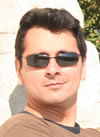 |
Michael Gonzales, Ph.D
Sr. Scientist
Apple Education
Apple, Inc
Michael Gonzales - Biography (.pdf)
Title: Using Apple Solutions for Advanced Data Processing, Visualization and
Collaboration
Abstract: In the next five years, Scientists will produce more data than has been collected
in the whole of human history. New generations of hardware and software are offering dramatic reductions in cost and extraordinary improvements in throughput. As such, computers will continue to play an increasingly important role in the creation and analysis of this data.
The vast amounts of data being generated and the democratization of this information have far reaching implications for the computational technology used in scientific research. More than ever before, scientists require a computing platform that allows them to easily create, distribute and access this information. In this brief presentation, you will learn about Apple’s latest technologies that empower scientists to conduct complex simulations and data analysis, while at the same time enabling easy distribution and access of their results. |
 |
 |
Kirk E. Jordan, Ph.D.
Emerging Solutions Executive
IBM Systems and Technology Group
CV: http://www-3.ibm.com/software/info/university/people/kjordan.html
Title: Parallelism in the Small: Parallel Computing is Becoming Pervasive – Are We Ready?
Abstract: We can no longer rely on computational speed up through increases in clock speed. In order to continue the speed ups users have come to expect from computer companies, the chip manufactures are turning to multi/many-core chips. Are we ready for such systems composed of multi/many-cores on a chip? Much of what we have learned on large distributed systems in principle will need to be applied to these multi/many-core efforts. I will describe briefly why computer manufactures are turning to these multi/many core chips. I will give some details of one of IBM’s offerings in the multi/many core chips, the Cell/B.E. and describe the system that this chip is part of. I will point out that lessons learn on large scale parallel systems will help us with developing algorithms for Cell/B.E. While the computational power may be accessible but most scientists are ill prepared to fully take advantage of this. New approaches to computational problems that will take full advantage of multi/many core computer systems need to be investigated. Bioinformatics and computational biology simulations are definitely among these. I will show some performance that will illustrate the power of systems of composed with multi/many-core chips. While progress is being made, there remain many challenges for the computational science community to apply multi/many-core systems to “Big” science problems with impact on society that until now or in current implementations have fallen short of the mark. |
 |
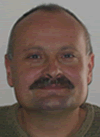 |
Heinrich Roder, D. Phil.
Chief Technology Officer
Biodesix, Inc.
Heinrich Roder's Biography (.pdf)
Title: Clinical Mass Spectrometry -- From Bench to Bedside
Abstract: Standard bio-marker discovery platform proceeds through a series of individual steps from discover through assay development and validation, and commercial roll-out. Each of these steps requires unique, time and resource intensive specialized platforms, which also require constant re-evaluation of markers found at previous steps. Mass spectrometry offers a unique opportunity to use the same underlying technology platform throughout this whole process. By following a ' fail early and cheaply' strategy we have developed a process that allows for the rapid screening of many clinical problems in a fraction of the time and cost of other techniques. We present an overview of our standard operating procedures including the special considerations and constraints, which are necessary to enforce quality assurance and validation throughout each step. This process enables the direct use of our discovery platform in clinical practice. |
 |
| |
TOP |
| |


